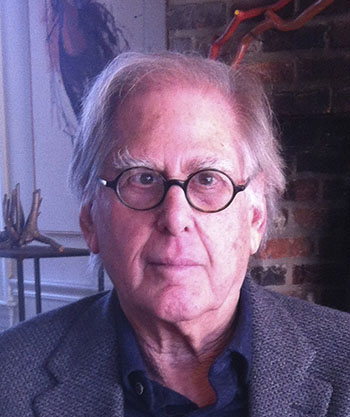Richard Chadwick, NIDCD Scientist Emeritus and a New NIH Catalyst Editor
One of the First NIH Researchers to Study Bioengineering
Richard Chadwick pioneered bioengineering technologies that have allowed researchers to study delicate tissues—such as those in the inner ear—without touching or damaging them. His work has led to a better understanding of how the inner ear works and how the structure of the cochlea enables it to amplify sound. Chadwick, who was chief of the Section on Auditory Mechanics in the National Institute on Deafness and Other Communication Disorders (NIDCD), retired in April 2019 after having spent 39 years at NIH, the last 23 of which were in NIDCD. He continues to serve NIH as a scientist emeritus and is also the new scientist-emeritus editor for the NIH Catalyst.

CREDIT: DANIELLA CHADWICK
Richard Chadwick, one of the first to study bioengineering, retired after 39 years at NIH and 23 years at the National Institute on Deafness and Other Communication Disorders.
“Dr. Chadwick was one of the first researchers to study bioengineering as we know it today, promoting it internationally to spark interest in the budding field before it was standard curriculum at universities,” said NIDCD Scientific Director Andrew Griffith. “His unique and extremely collaborative approach to research has yielded fundamental discoveries about cell mechanics and fluid dynamics within the inner ear as well as other types of tissues and cells.”
Chadwick began his career in mechanical engineering, earning a bachelor’s and then a master’s degree from Cornell University (Ithaca, New York) in 1966. He went on to earn a Ph.D. in aeronautics and astronautics from Stanford University (Stanford, California) in 1971. He then joined the engineering faculty at the Technion-Israel Institute of Technology (Haifa, Israel) in 1971, where he began to study the mechanical properties of the cochlea, the organ of hearing in the inner ear. He moved back to the United States in 1975 to work as a research fellow in chemical engineering at the California Institute of Technology (Pasadena, California) before becoming an adjunct associate professor at the University of California at Los Angeles in 1977.
In 1980, Chadwick joined NIH’s Bioengineering and Instrumentation Branch (a program in the Office of the Director’s Office of Research Services), later leading the Biomechanics Group.
“When I first arrived at NIH, there was no perimeter gate; it was an open campus,” Chadwick said. “However, the campus was not open about mixing engineering, physics, and math with biology. There is much less resistance now. I hope I had something to do with it.”
After the NIDCD was established in 1988, Chadwick began collaborating with scientists there and re-entered the field of cochlear dynamics. In 1996, he transferred to the NIDCD as a senior investigator and chief of the Section on Auditory Mechanics. In 2006, he was elected as a fellow of the American Institute for Medical and Biological Engineering.
Chadwick was integral to the development and use of atomic force microscopy (AFM). He described how to use AFM with modeling to gain insights into soft tissues. He later pioneered a modified version of this technology called noncontact AFM, which allows researchers to study tissues without physically touching—and thus damaging—their delicate structures. This method has enabled Chadwick and his collaborators to gain insight into the behavior of tissues, such as the tissue necessary for sound detection in the inner ear.
Through an artful interweaving of mathematical, physical, and biological approaches, Chadwick’s work has increased knowledge of the hearing process. One of his many contributions was an insight into the structure of the cochlear spiral. The reason for the snail shape of the cochlea in mammals had been elusive. He and his collaborators used cues from famous architectural structures such as whispering galleries—where someone can hear another’s whisper from across a large enclosed space, typically an area with curved walls—to show that the spiral curvature is critical to amplifying sensitivity to low-frequency sounds.
In reflecting on his interdiscsiplinary work and life in general, Chadwick said that “there is an intersection between science and art. Both are intended to communicate a message and to make people feel something.”
At an April 10 symposium held in Chadwick’s honor, his collaborators and former postdocs praised his work as well as his mentoring, his advocacy for women in science, and his kindness.
“Being kind to those you supervise is not always easy. It is a choice,” said former postdoc Núria Gavara, who is now an associate professor at Queen Mary University of London (London). “In this regard, Richard has been making the right choices for 40 years.”
This article was adapted from one that was first published on the NIDCD website at https://www.nidcd.nih.gov/news/2019/richard-chadwick-chief-nidcd-auditory-mechanics-section-retires. To read an NIH Catalyst story (in the September-October 2010 issue) on a device Chadwick developed to measure the inner-ear membrane, go to https://nihsearch.cit.nih.gov/catalyst/2010/10.10.01/catalyst_v18i5.pdf (see pages 10 and 11).
This page was last updated on Monday, April 4, 2022
